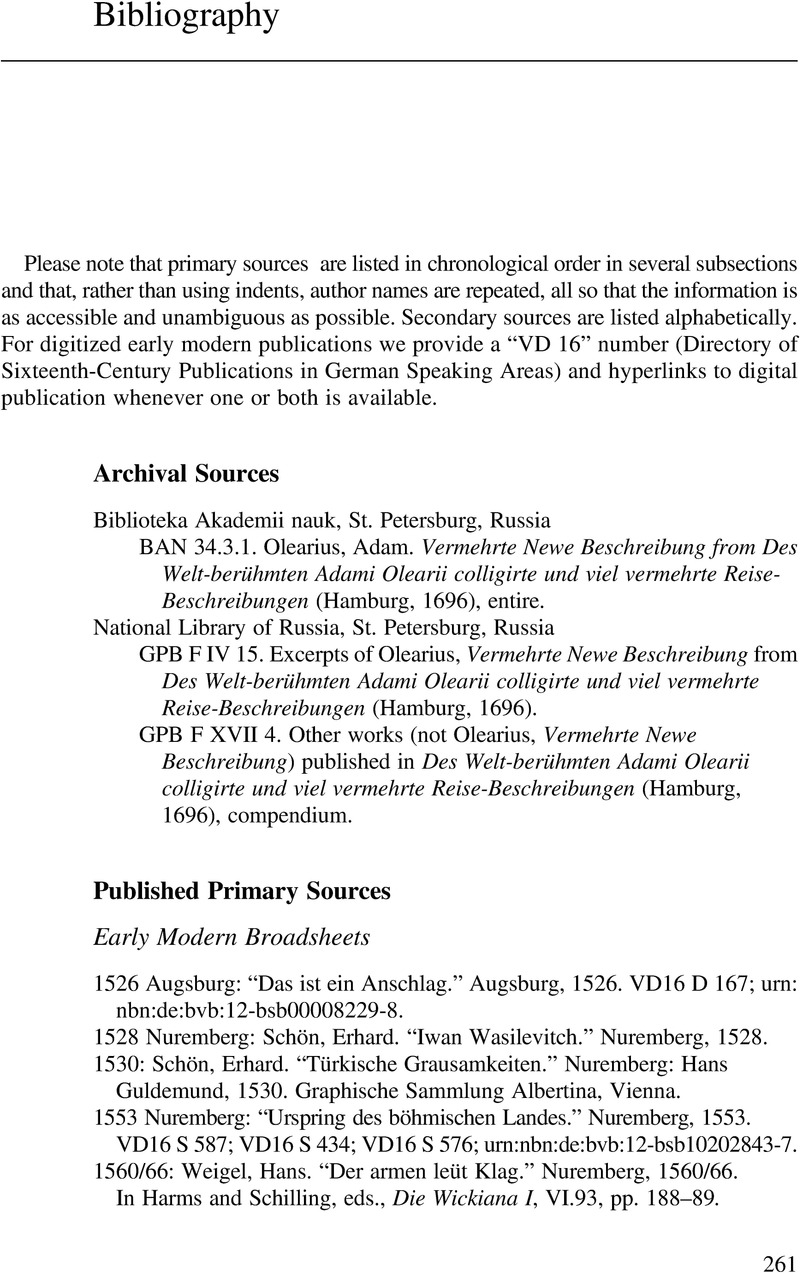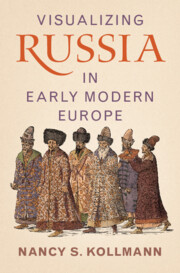Book contents
- Visualizing Russia in Early Modern Europe
- Visualizing Russia in Early Modern Europe
- Copyright page
- Dedication
- Contents
- List of Figures
- Preface
- Introduction
- Part I Encountering Russia Visually
- Part II Sigismund von Herberstein
- Part III The Muscovy Company Maps Eurasia
- Part IV Visuality Explodes
- Part V Adam Olearius
- Conclusion
- Bibliography
- Index
- References
Bibliography
Published online by Cambridge University Press: aN Invalid Date NaN
- Visualizing Russia in Early Modern Europe
- Visualizing Russia in Early Modern Europe
- Copyright page
- Dedication
- Contents
- List of Figures
- Preface
- Introduction
- Part I Encountering Russia Visually
- Part II Sigismund von Herberstein
- Part III The Muscovy Company Maps Eurasia
- Part IV Visuality Explodes
- Part V Adam Olearius
- Conclusion
- Bibliography
- Index
- References
Summary

- Type
- Chapter
- Information
- Visualizing Russia in Early Modern Europe , pp. 261 - 305Publisher: Cambridge University PressPrint publication year: 2024



